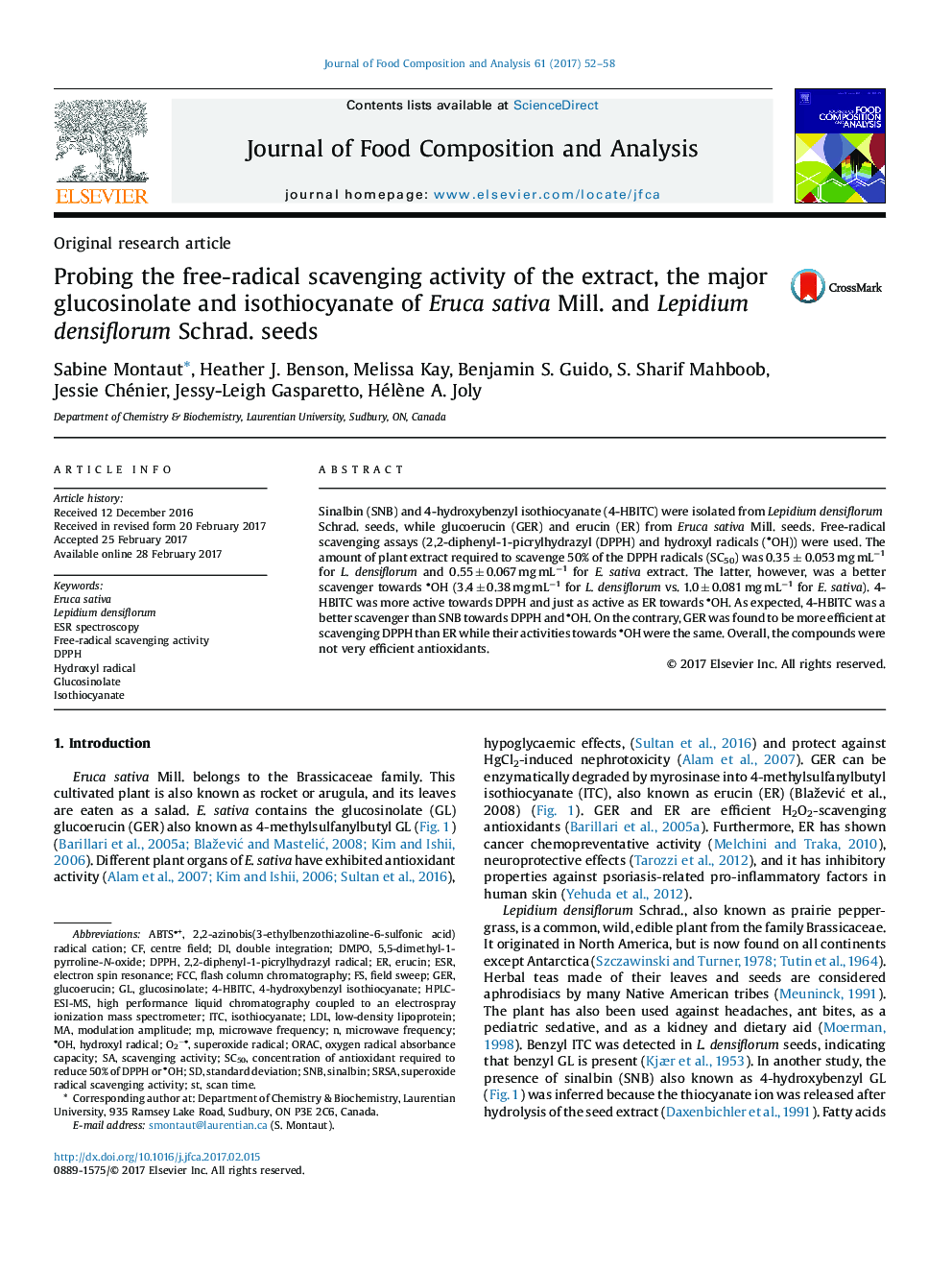| Article ID | Journal | Published Year | Pages | File Type |
|---|---|---|---|---|
| 5136844 | Journal of Food Composition and Analysis | 2017 | 7 Pages |
â¢Lepidium densiflorum seed extract has scavenging activity towards DPPH and OH.â¢L. densiflorum extract contains sinalbin which was not a good antioxidant.â¢4-hydroxybenzyl isothiocyanate was a better scavenger than sinalbin.â¢Glucoerucin was a better DPPH scavenger than erucin.â¢The glucosinolates and their isothiocyanates investigated are weak scavengers.
Sinalbin (SNB) and 4-hydroxybenzyl isothiocyanate (4-HBITC) were isolated from Lepidium densiflorum Schrad. seeds, while glucoerucin (GER) and erucin (ER) from Eruca sativa Mill. seeds. Free-radical scavenging assays (2,2-diphenyl-1-picrylhydrazyl (DPPH) and hydroxyl radicals (OH)) were used. The amount of plant extract required to scavenge 50% of the DPPH radicals (SC50) was 0.35 ± 0.053 mg mLâ1 for L. densiflorum and 0.55 ± 0.067 mg mLâ1 for E. sativa extract. The latter, however, was a better scavenger towards OH (3.4 ± 0.38 mg mLâ1 for L. densiflorum vs. 1.0 ± 0.081 mg mLâ1 for E. sativa). 4-HBITC was more active towards DPPH and just as active as ER towards OH. As expected, 4-HBITC was a better scavenger than SNB towards DPPH and OH. On the contrary, GER was found to be more efficient at scavenging DPPH than ER while their activities towards OH were the same. Overall, the compounds were not very efficient antioxidants.
